INDIAN ARMED FORCES CHIEFS ON OUR RELENTLESS AND FOCUSED PUBLISHING EFFORTS

The insightful articles, inspiring narrations and analytical perspectives presented by the Editorial Team, establish an alluring connect with the reader. My compliments and best wishes to SP Guide Publications.

"Over the past 60 years, the growth of SP Guide Publications has mirrored the rising stature of Indian Navy. Its well-researched and informative magazines on Defence and Aerospace sector have served to shape an educated opinion of our military personnel, policy makers and the public alike. I wish SP's Publication team continued success, fair winds and following seas in all future endeavour!"

Since, its inception in 1964, SP Guide Publications has consistently demonstrated commitment to high-quality journalism in the aerospace and defence sectors, earning a well-deserved reputation as Asia's largest media house in this domain. I wish SP Guide Publications continued success in its pursuit of excellence.
Top 20 Reforms
After having been engaged in a perpetual struggle for survival in the last 25 years, the Indian civil aviation industry is in dire need for wide-ranging reforms
Ever since the airline industry in the domestic sector came into being in India in December 1912 with the launch of the first air service between Karachi and Delhi in collaboration with the Imperial Airways of UK, it remained largely in a state of stagnation for nearly eight decades primarily as it was a part of the public sector and under the control of the Central Government. The first wave of the emergence of private airlines on the scene began in the early 1990s in the wake of economic liberalisation initiated by the Congress Government under Prime Minister P.V. Narasimha Rao. Unfortunately, a majority of these start-up airlines soon downed shutters as they were unable to sustain their business models in the rather hostile business environment. Only Jet Airways and Air Sahara with powerful financial backing managed to remain afloat. Business and General Aviation however continued to languish. Air travel, whether by airlines or by business or private jets, was regarded as the exclusive privilege for the elite.
The second attempt to foray into the airline industry by the private sector began with the entry of Air Deccan sponsored by Captain G.R. Gopinath and his partners. Air Deccan, later renamed as Deccan, ushered in a unique low-cost model that suddenly made air travel affordable to a much larger segment of society especially the middle class. A number of new low-cost carriers emerged on the scene in quick succession to exploit the newly arising opportunities. Of these, only IndiGo and GoAir continue to retain some respectability in their operations. Kingfisher Airlines that acquired Deccan folded up under a crushing burden of debt and SpiceJet that all along had put up remarkable performance, for some reason not easy to explain, has gone into a nosedive and there are apprehensions that this low-cost carrier too may go the Kingfisher way. In the meantime, Jet Airways that had earlier acquired Air Sahara, has now joined hands with Etihad Airways marking a major shift in its business strategy as well as initiating a new trend in the airline industry.
The third wave of resurgence in the Indian airline industry now appears to be underway with Air Costa, AirAsia India and Tata-SIA joint venture Vistara hitting the Indian skies. A number of other applicants have also been given permission and are waiting in the wings to launch new airlines largely as regional carriers. In the meantime the state-owned national carrier Air India that has accumulated humongous losses and a colossal debt burden has all along been afflicted with controversy over its business model and viability. It has survived so far only with massive infusion of public funds. Although the airline is currently in the process of restructuring, it cannot be said with any degree of certainty whether or not Air India’s efforts to emerge as a profitable entity will ultimately be successful.
After having been engaged in a perpetual struggle for survival for the last 25 years, the Indian civil aviation industry is in dire need for wide-ranging reforms. The top 20 of these covered briefly in the succeeding paragraphs would serve to define a road map ahead for the government to ensure not only its survival but also to propel the Indian aviation industry to a new level.
 | Regulatory Reforms 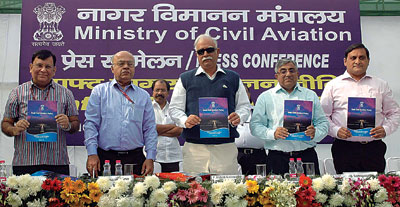 Introduce a system of manning in the regulatory agencies by experts from the industry and not by generalists or bureaucrats alone. Improve the regulatory regime by reducing Civil Aviation Regulations/Circulars to seamless, mutually exclusive documents, easily navigable and easily comprehensible. |
Aviation Turbine Fuel 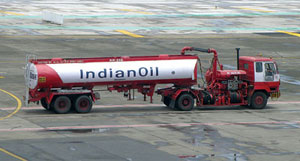 Consumption of aviation turbine fuel (ATF) constitutes around 40 per cent of the operating cost of an airline. The price of ATF in India is subjected to high levels of taxation both by the Central and the State Governments. There has been some reduction in the price of ATF in India in the recent past following the crash in global price of crude. However, the reduction in the price of ATF is not proportionate to the fall in the price of crude in the global market. There is an urgent need to review and rationalise the tax structure on ATF. It has also been suggested that ATF be placed under the “declared goods” category. |  |
 | Airport Charges  Charges levied at airports in India, which include parking and landing charges, are said to be among the highest in theworld. Parking space at the metro airports as also at other major airports in the country need to be increased substantially to facilitate parking of not only increasing number of airlines but also business and general aviation aircraft whose numbers are also set to increase. There is an imperative need to reduce the variety of charges imposed on aircraft for operating at Indian airports. |
Low-Cost Airports 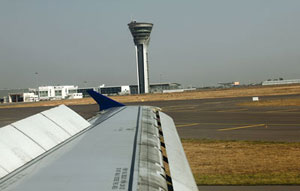 In order to keep operating costs low, there is a need to build low-cost airports as also low-cost terminals at the metros and the other large airports. The requirement is to have a large number of no-frills airports to keep operating costs low. Operating costs can also be lowered through the introduction of new technology for passenger and baggage handling as also for reducing the high cost of security provided by the Bureau of Civil Aviation Security. |  |
 | Regional Connectivity 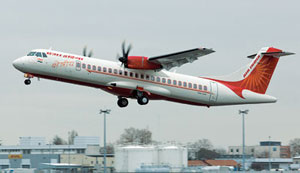 With a population that is only 25 per cent of that in India, the US has over 19,000 commercial airports as compared with around 500 in India. To increase the level of penetration by civil aviation amongst the Indian population, there is a need to build several hundred more airports in the country especially to connect remote and not easily accessible areas of the country. |
Air Cargo Industry 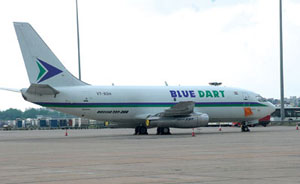 Currently bulk of domestic air cargo is carried in the cargo hold of passenger aircraft. There is a need to develop air cargo hubs, improve cargo storage and handling facilities at airports through quicker screening employing advanced technologies, automated handling and reduced paperwork. There is also the need to promote dedicated air cargo airlines particularly to exploit the economic potential of the North East regions of the country. |  |
 | Development of the MRO Industry 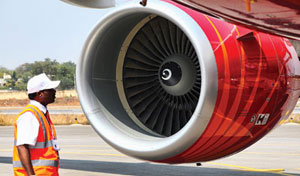 The maintenance, repair and overhaul (MRO) industry in India is not developed enough to adequately support the airline industry but business and aircraft in the business and general aviation segment. On account of duty on import of spares and other charges levied on the MRO industry, operators of business jets find it less expensive to avail of MRO facilities outside India. This segment of the aviation industry needs a complete review and restructuring. |
Air Safety Oversight 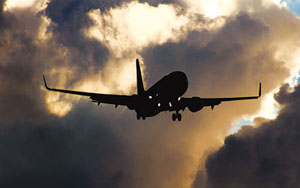 Downgrade to Category II of India’s air safety rating by the US Federal Aviation Administration should be regarded as a “wake up call”. The issue needs to be addressed with due seriousness and alacrity. The Directorate General of Civil Aviation (DGCA) needs to recruit inspectors to ensure the appropriate level of air safety oversight. There is also the need to fast-track the introduction of a Civil Aviation Authority (CAA) to replace the DGCA. |  |
 | Flying Training 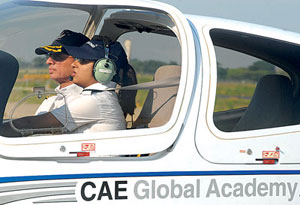 Create infrastructure and involve competent professionals to provide quality training for aviation professionals both in the fixed- and rotary-wing aircraft regimes. |
Privatisation of Air India 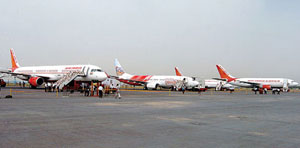 Operating the perpetually loss-making national carrier Air India at enormous cost to the taxpayer does not appear to be a sustainable arrangement in the long run. It is about time the government confronts this issue squarely and take some hard and possibly unpalatable decisions pertaining to the privatisation of the national carrier. |  |
 | International Operations 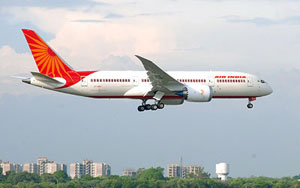 The existing regulations stipulating that a domestic airline in India must have a minimum of 20 aircraft in its fleet and experience in domestic operations for a minimum of five years to qualify for being considered for operations on the international segment need to be looked at seriously. Called the 5/20 rule, it is illogical and a retrograde step taken in the past perhaps to serve some vested interests. This rule needs to be reviewed and preferably scrapped altogether. |
Route Dispersal Guidelines 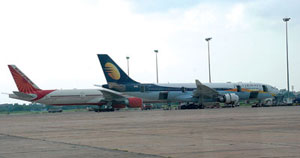 Route Dispersal Guidelines (RDG) must be incentivised rather than forced upon the industry. Bilateral Air Service Agreements too must be rationalised. Optimising the RDG it currently being considered to restrict the point of calls of international bilaterals to just the six metros, which is being opposed by the state governments. |  |
 | Regulatory Framework for Business and General Aviation 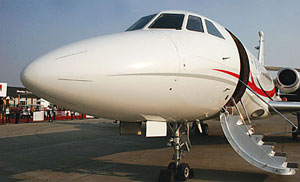 Currently, the regulations governing Business and general aviation are the same that apply to the airline industry. In view of the vastly differing paradigms, business and general aviation aircraft must be governed a separate regulatory framework to enable this segment of the industry to operate with greater efficiency and make a meaningful contribution to the national economy. |
Duty on Import of Aircraft 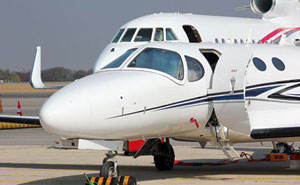 At present, duty imposed on import of aircraft, especially those for private use, is exorbitant. This duty structure on import of aircraft needs to be reviewed in totality and restructured to revitalise the aviation industry. |  |
 | Promote General Aviation 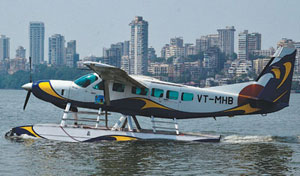 Facilitate the availability of general aviation to the masses. This will help build an “Aviation Culture” especially amongst the youth. |
Need for Heliports 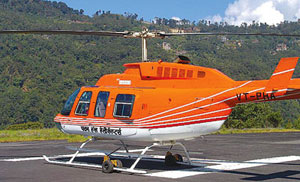 At present helicopters have to operate from airfields where fixed-wing aircraft operate and are subject to a common air traffic management procedures. This degrades the inherent advantage of a helicopter that ought not to be runway bound. There is thus the need to build heliports all across the country that are dedicated to rotary-wing operations. There is also the need to mitigate the oppressive environment in which helicopters operate as these operations are on the lowest rung of priority. |  |
 | Air Space and Air Traffic Management 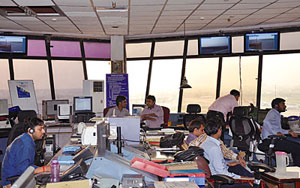 Currently, the regulations governing business and general aviation are the same that apply to the airline industry. There is a need to upgrade the country’s air traffic management (ATM) and other systems especially through the introduction of the latest technologies in surveillance systems, automation and improved training of air traffic controllers. The capacity of airports, especially the metros, to handle traffic needs to be improved though installation of better radars, radio navigational aids and instrument landing systems. This will help reduce congestion at airports resulting in saving of fuel and time. The operationalisation of the IRNSS should improve the situation considerably. But considering the long lead times it is necessary to start thinking in terms of a system like ADS-B too. |
Coordination with Military Aviation 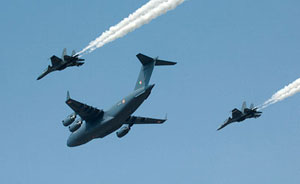 Better coordination with military aviation in the country in the area of air space and air traffic management will facilitate better utilisation of air space permitting more direct routings resulting in improved fuel economy and time saved. |  |
 | Induction of Fuel-Efficient Aircraft 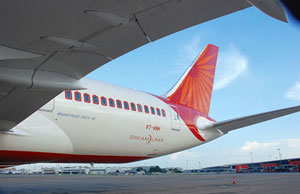 The airline industry must periodically upgrade their fleet with aircraft of higher levels of fuel-efficiency. This will ensure operational efficiency, improved economy as well as higher levels of air safety. |
Unmanned Aerial Vehicles 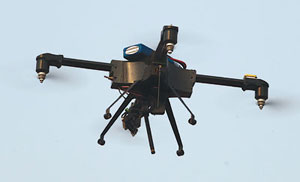 The unmanned aerial vehicles (UAVs) are destined to play a major role in the aviation industry in the future. Introduce appropriate regulatory framework to ensure safe integration of UAV traffic in civil air space. |  |
Conclusion
The issues in the realm of the Indian civil aviation industry listed above have been under discussion for some time. Also, some of these have been under critical examination by expert committees and hopefully some of these may be resolved soon as well as solutions may be forthcoming the remaining. The Indian civil aviation industry will need focused attention of the NDA Government for its survival and well-being.





